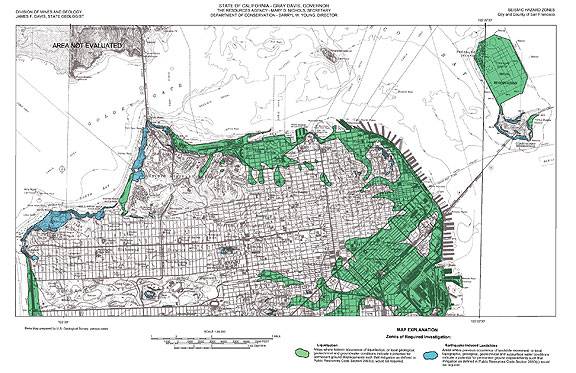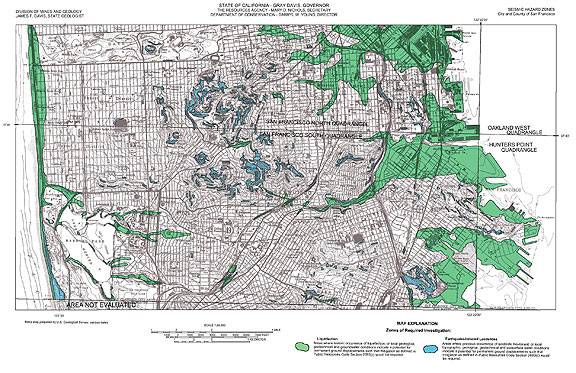GEOLOGY: Difference between revisions
mNo edit summary |
m (Protected "GEOLOGY": primary source [edit=sysop:move=sysop]) |
||
| (4 intermediate revisions by the same user not shown) | |||
| Line 1: | Line 1: | ||
'''<font face = Papyrus> <font color = maroon> <font size = 4>Primary Source</font></font> </font>''' | |||
''' | [[Image:Sfseishazmapnorth smaller.jpg]] | ||
'''Green areas are known to be subject to liquefaction during earthquakes. Blue areas have been prone to quake-induced landslides.''' | |||
[[Image:Sfseishazmapsouth smaller.jpg]] | |||
[http://geology.about.com/library/weekly/aa120300a.htm San Francisco Hazard Maps] | |||
'''THE SAN ANDREAS FAULT ''' | '''THE SAN ANDREAS FAULT ''' | ||
| Line 15: | Line 21: | ||
[[Serpentine Grasslands and Maritime Chaparral | More geology]] | [[Serpentine Grasslands and Maritime Chaparral | More geology]] | ||
[http://pubs.usgs.gov/bul/b2188/ US Geological Survey resources on local geology] | |||
[[ | [[Animals of the Dunes | Prev. Document]] [[ROCKS | Next Document]] | ||
[[ | [[category:Ecology]] [[category:Geological Time]] [[category:Earthquakes]] | ||
Latest revision as of 21:10, 2 January 2009
Primary Source
Green areas are known to be subject to liquefaction during earthquakes. Blue areas have been prone to quake-induced landslides.
THE SAN ANDREAS FAULT
The San Andreas fault is one of the world's longest faults, extending from the Gulf of California to Point Arena. It is a transform fault, bringing the Pacific tectonic plate northward past the North American Plate. The fault does not go through San Francisco -- it shoots offshore at Mussel Rock in Daly City -- but it is responsible for most of the large earthquakes that have occurred in San Francisco.
SAN FRANCISCO BAY
San Francisco Bay was not always a bay. During Ice Ages, the last of which ended about 10,000 years ago, ocean waters accrue in ice at the poles and the ocean retreats from the coast. Forty-seven percent of California's rivers drain into the bay. If another ice age occurred, there would not be salt water in the bay. There might be river channels and even waterfalls as the rivers emptied into the ocean near the Farallon islands. The bay has advanced and retreated this way several times with glacial cycles.
--Anna Sojourner


